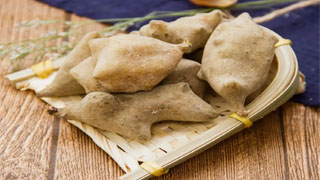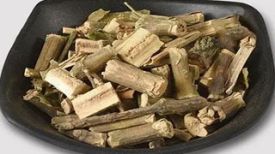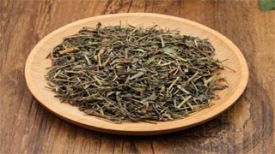
1. Aliases
Clam, Baichongcang, Mufuzi, Hanbeizi, Wuyanpao, Qibeizi, Hongyetao.2. Plant morphology
Deciduous small trees or trees, with a height of 2-10 meters. The bark is gray black, and the small branches are densely covered with brown pubescence. Single pinnate compound leaves, alternate, with enlarged base of the petiole. The leaf axis and petiole have broad wings and are covered with light yellow brown pubescence; 5 to 13 small leaves, sessile, ovate, oval to oval or long ovate, 5 to 14 centimeters long, 2.5 to 5 centimeters wide, apex gradually pointed, short gradually pointed or acute. The base is circular or wedge-shaped, with coarse serrations at the edges. The upper part is green, sparsely pubescent, and the lower part is grayish green, densely covered with light brown pubescence; No small petiole. The panicle is terminal, 20-30 centimeters long, with small flowers and both bisexual and male flowers; Sepals of bisexual flowers are 5, greenish yellow, ovate in shape, about 0.6 millimeters long, with blunt tips and pubescent outer edges; Petals 5, white, obovate long elliptical in shape, 1.6 millimeters long, apex circular, edges and inner base pilose; Stamens 5, attached to the edge of the disk, slightly shorter than the petals, yellow anthers, oval shaped, with the character "D" attached, and yellow filaments; The pistil is shorter than the stamen, the ovary is superior, densely hairy, the style is 3, the stigma is head shaped, yellow; Male flowers are slightly smaller than bisexual flowers, with sepals and petals similar to bisexual flowers. The stamens are 5, small in shape, and have a degenerate ovary in the center. The fruiting sequence is upright; The stone fruit is flat in shape, with a diameter of about 3-4 millimeters. When ripe, it is orange red to red, covered with grayish white short pubescence, and contains one seed. It is flat, round, and gray. The flowering period is from June to September, and the fruiting period is from September to November.
3. Origin distribution
Born on sunny and gravelly slopes, in the wilderness or shrubs. Distributed in all provinces and regions except Qinghai, Xinjiang, Heilongjiang, and Liaoning. But only Sichuan, Guizhou, Yunnan, Hunan, Hubei, Henan, and Zhejiang can produce gallnuts.
4. Harvesting and processing
Harvest in autumn, boil or steam in boiling water until the surface turns gray, kill aphids, remove, and dry. According to different appearances, it can be divided into "belly size" and "corner size".
5. Characteristics of medicinal herbs
Belly fold: in the shape of an elongated or spindle shaped sac, 2.5-9 centimeters long, with a diameter of 1.5-4 centimeters. The surface is grayish brown or grayish brown, with slight pubescence. The texture is hard and brittle, easily broken, with a keratin like cross-section and a glossy appearance. The wall thickness is 0.2-0.3 centimeters, and the inner wall is smooth. There are black brown dead aphids and gray powdery excrement. Qi is unique and taste astringent. Jiaobei: It is rhombic in shape, with irregular obtuse angle like branches, obvious pubescence, and thin walls.
6. Nature, taste, and meridian tropism
Cold in nature, sour and astringent in taste. Return to the lung meridian, large intestine meridian, and kidney meridian.
7. Effect and function
Contain the lungs and reduce fire, astringent the intestines to stop diarrhea, restrain the lungs, stop bleeding, and reduce dampness and sores. The lung astringent and intestinal astringent drugs belong to the subcategory of astringent drugs.
8. Clinical applications
Internal administration: decoction, 3-10 grams; At the end of the study, 1.5-6 grams, or in pills or powder. External use: In moderation, stir fry and smoke to wash; Grind and sprinkle or adjust the application. Used to treat lung deficiency, persistent cough, lung heat and phlegm cough, persistent diarrhea and dysentery, sweating and night sweating, thirst, bloody stools and hemorrhoids, external trauma and bleeding, abscess and sore toxin, and wet and rotten skin.
9. Pharmacological research
It has functions such as convergence, antibacterial, sperm killing, and anti-tumor. Tannic acid has a precipitation effect on proteins, and can form insoluble complexes with many heavy metal ions, alkaloids, and glycosides, making it a chemical detoxifier.
10. Chemical composition
Mainly containing gallnut tannins.
11. Taboos for use
Avoid taking it for cough caused by external wind cold, solid heat in the lungs, and diarrhea caused by stagnant blood.
12. Compatibility prescription
① Treating hemorrhoids: Divide Artemisia argyi leaves, Chinese galls, white glue, and Chinese toom roots, file them into small pieces, use the method of burning incense, place them in a long bucket, and sit on the affected area to fumigate. (Zhi Zhi Fang)
② Treatment of cracked hands and feet: Chinese gallnut powder, filled with bovine bone marrow into the seam. (On the Great Achievements of Medical Formulas)
③ Treatment of trichomoniasis vaginitis: 15 grams of Chinese galls, boiled and rinsed with water. (Sichuan Journal of Traditional Chinese Medicine, 1979)
④ To treat chronic cough caused by lung deficiency: 6g of gallnuts, 6g of Schisandra chinensis, and 6g of poppy shells. Boiled in water. (Sichuan Journal of Traditional Chinese Medicine, 1979)
⑤ More than 30 grams of Chinese nutgall, half baked and half baked, is the end. The paste pill of wutong is large, and every 30 pills taken, red and white dysentery are served with liquor, and rice soup is served with water. (Compendium of Principles)
⑥ Treatment of nosebleeds: Blow the dried gallnut and divide it equally with fresh cotton ash. Drink 9 grams of rice. (Compendium of Principles)
⑦ Excessive bleeding between teeth: galls, burning, apply at the end of grinding. (Hygiene Simplified Formula)
⑧ Treatment of urine and blood: Chinese nutgall powder, salt plum tamping and pills, large wutong seeds, 50 pills for each hollow wine. ("Bianhu Ji Jian Fang")


